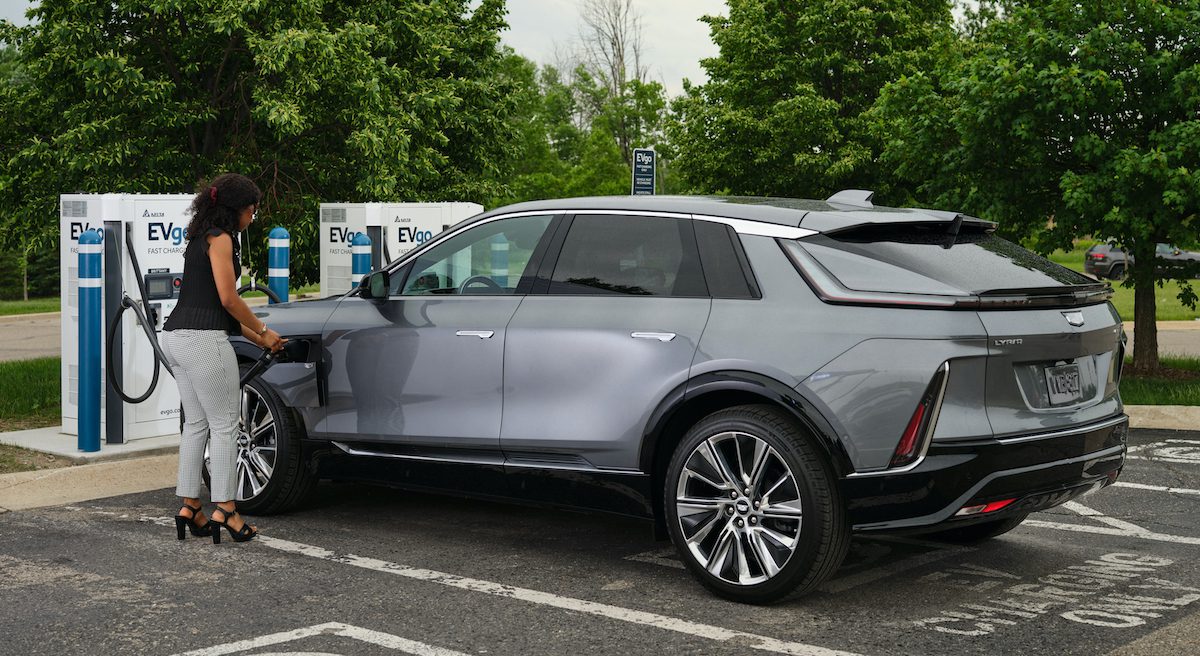Smoother Payments Key to Streamlining Electric Vehicle Charging, Stakeholders Say

As automakers, charging networks and others work to speed the adoption of electric vehicles (EVs) by streamlining the ownership experience, payments at charging stations are often on the agenda.
In a recent example, General Motors (GM) and charging station network EVgo announced they expanded their collaboration and added a new Plug and Charge service to GM’s Ultium Charge 360 — an ecosystem of charging networks, GM vehicle mobile apps and other elements designed to simplify charging for EV drivers.
Once activated by the EV driver, Plug and Charge enables customers to go to a participating public network’s station and plug in the charging cable to charge their vehicle, with no additional steps needed — and without the need to open a mobile app or swipe a credit card.
“We want to be the company that makes the EV experience seamless and convenient for everyone,” GM Vice President of EV Ecosystem Hoss Hassani said in a GM press release. “Our collaboration with EVgo on Plug and Charge complements the work already in place with Ultium Charge 360 and is a part of our larger effort this year to expand charging infrastructure, access and education.”
Simplifying the Fast-Charging Experience
With this collaboration, drivers with an EVgo account, active OnStar connected services and the GM brand app for their vehicle must perform a one-time activation of Plug and Charge within the app. After that, at a compatible station, the charger and the car will communicate to securely match the vehicle to the driver’s EVgo and GM brand app account.
Plug and Charge is now available at nearly all EVgo DC fast-charging stations, and GM plans to broaden the service to include stations across its Ultium Charge 360 network.
“At its core, this latest iteration of the Autocharge technology is a customer convenience feature that can save drivers time by simplifying the fast-charging experience while maintaining a high level of security and protection,” EVgo Chief Technology Officer Ivo Steklac said in an EVgo press release.
Focusing on Payment Methods
The federal government, too, has identified payments for charging to be a key part of encouraging drivers to transition to EVs and streamlining the EV ownership experience.
Read more: US Standards for EV Chargers Would Require Contactless Payments
In proposed standards that are part of the federal government’s plan to build out 500,000 EV chargers nationwide as part of the Bipartisan Infrastructure Law (BIL), the Department of Transportation’s (DOT’s) Federal Highway Administration (FHWA) specified that on EV charging infrastructure installed using funds provided by BIL, payment methods that are offered must be “secure, equitable and accessible.”
“Without strong standards, chargers would be less reliable, may not work for all cars, or lack common payment methods,” the White House said in a June fact sheet. “The new standards will ensure everyone can use the network — no matter what car you drive or which state you charge in.”
In another effort to make it easy to pay for charging, Toyota announced in March that it will work with EV charging network ChargePoint and use ChargePoint’s application programming interfaces (APIs) to help drivers find, use and pay for vehicle charging via the Toyota App.
See more: Automakers Partner With Third-Party Networks, Apps to Ease Electric Vehicle Ownership
“We want to instill a feeling of confidence in our bZ4X customers by providing a variety of charging options both at home and away to serve each customer’s unique charging needs and preferences,” Toyota Vice President of EV Charging Solutions Christopher Yang said in a statement at the time.